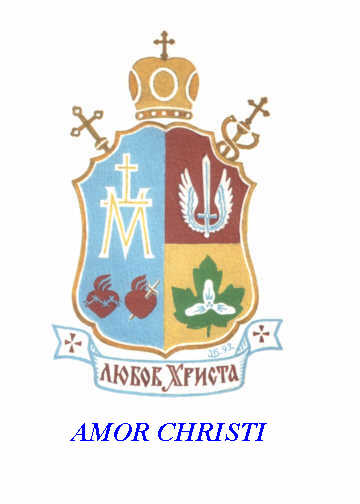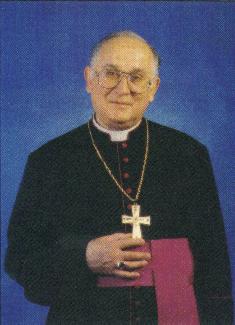|
The Nihil Obstat and Imprimatur, which the Roman Catholic Church affixes to religious books, was and is a testimonial to the orthodoxy of doctrine of a given book. It need not necessarily convey the views or convictions of either the delegated priest/theologian censor who gives his Nihil Obstat, or of the bishop, who granted permission to print the book. It is a guarantee that there is nothing against the Christian and Catholic faith or moral doctrine. This practice served the needs of the faithful well. There were, nonetheless, abuses in past history. We hear stories of Catholic ecclesiastics (bishops, priests and theologians) who would proscribe books, nay even order men and women who were accused of heresy, to be burned at the stake. We have the examples of Saint Joan of Arc and Savonarola, both of whom were burned at the stake on charges of heresy. Then there are the stories of the Spanish Inquisition. Two other saints, mystics and theologians, Saint Thomas Aquinas and Blessed Padre Pio of Pietralcina, were hounded by their ecclesiastical superiors with accusations of heresy, hysteria. In the end the Church acknowledged them as saints. There are similar events in our times. Zealous witch hunters intent on defending doctrinal purity denounce the writings not only of suspect modernist theologians, but also even of devout and holy people, whose writings or claims to heavenly messages donít fit their particular mental schema. Accusations of channeling, and whatever. Several such names come to mind. Luisa Picchiaretta, Concepcion Cabrera de Armida (Conchita), Maria Valtorta, Julia Kim and others. In modern times there were also Blessed Maria Agreda and the Venerable Catherine Emmerich. Theologians and bishops have problems with supernatural phenomena. I wish to address the various issues involved with the life and writings of one of these, Maria Valtorta. She was born in Caserta, Italy in 1887 and died in Viareggio in 1961. She was bedridden from the late 1930ís, following a mindless attack by a young hood that smashed her back with a crowbar. The Lord accepted her readiness to carry her cross in union with His passion. She became a victim soul. Jesus rewarded her generosity in suffering with boundless graces. She became his amanuensis. He dictated or unfolded to her the story of His life, death and resurrection, that of His mother and the early Church in a series of private revelations that began in 1943 and continued to 1954. With other holy souls it had suited His purpose to give external signs of the stigmata of His passion. He respected the self-effacing humility of Maria Valtorta, who asked that the signs of her passion remain invisible to the external world. In the last years of her life she totally withdrew into herself. Yet her literary productivity in the 12 years between 1943 and 1954 filled many volumes. Maria, faithful to Christ and to His Church was in total obedience to the laws and rules of the Catholic Church. Nothing was to be printed without ecclesiastical approbation. Notwithstanding this insistence her spiritual director Fr. Migliorini and the first editor of her works Michele Pisani, began to divulge fragments of the writings. Three Servite Fathers had presented Pope Pius XII a typed copy of the first volume of The Poem of the Man-God. The pope said to them "Let it be published adding nothing to it nor taking away anything." M. Pisani published the first volumes of Valtortaís Life of Christ, The Poem of the Man-God, without the approval of the local bishop. Zealous ecclesiastics brought this to the attention of their superiors. The Poem of the Man-God was placed on the index of forbidden books, not because of doctrinal errors, but because it was printed without the required nihil obstat and imprimatur. The Poem of the Man-God, as it is titled in the current English translation, or the "Gospel as it was revealed to me", as it is known in subsequent Italian editions, is now in its fourth Italian edition. It has been translated into many other languages. Cardinal Ratzinger in private letters has acknowledged that this work is free from errors in doctrine or morals. The Conference of Italian Bishops has acknowledged the same in its correspondence with the current editor, Dr. Emilio Pisani. Pope Paul VI abrogated the Institution of the Index of Forbidden Books in 1965/6. Prior approval of writings reporting new revelations is no longer required. The authors and publishers must submit their judgment concerning the alleged revelations to the ultimate judgment of the Church, without making claims of their truth. This ruling is retroactive to accounts even of earlier revelations if there is nothing contrary to faith and morals. Through a comedy of errors, some of these same ecclesiastics themselves now ignore the rule of canon law, and continue to condemn the writings of Maria Valtorta. The big issue is this: "Is there anything against faith or morals in her writings?" All her critics begrudgingly have acknowledged that there is nothing against faith and morals. The old Index of Forbidden Books has been abolished. Yet allegedly Catholic theologians, priests, Catholic websites, newspapers and even radio programs insist on bringing out old skeletons, the original condemnation of the Congregation for Doctrine of the Faith in 1958. Not only is this bad scholarship; it is outright immoral and sinful to continue to level their accusing fingers at this gift of heaven and Godís faithful servant and victim soul, Maria Valtorta. The above is a somewhat lengthy introduction to my original intent: to present a letter of commendation, a Nihil Obstat, Imprimatur and a testimonial to this website of a Catholic monk on the writings of Maria Valtorta. Not only am I saying that there is nothing objectionable in The Poem of the Man-God and all the other writings of Valtorta in so far as faith and morals are concerned. I commend the painstaking scholarship of this monk that has brought together an array of the writings of a variety of theologians, like Fr. Karl Rahner on the significance of private revelation, of countless others who have given testimonies and writings of Maria Valtorta, the theological commentaries to her writings of one of her early spiritual directors, Fr. Corrado Berti; and the numerous other testimonies and studies on various aspects of Mariaís writings. Biblical experts, geographers of the Holy Land, theologians, prelates and scientists, consistorial lawyers, who knew and visited Maria Valtorta in her lifetime. He adduces the testimony of the Blessed Fr.Gabriel Allegro, OFM, biblical exegete and missionary; and the painstaking scholarship of the present editor, and publisher of the works, Dr. Emilio Pisani, who has collated all the arguments, pro et contra, on the writings of Maria Valtorta. This is a website worth visiting many times both for those that have acquired the writings of Maria Valtorta, as well as for those who have not yet read this Life of Christ and the Blessed Mother, and especially for those who want to cast stones.
Dated Rome, Italy + Roman Danylak, bishop
|

